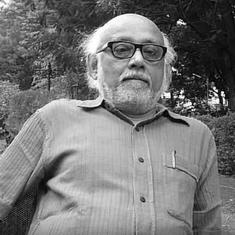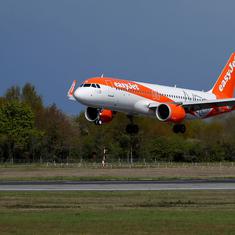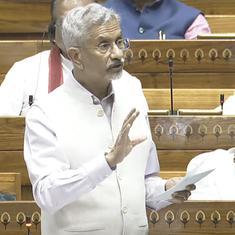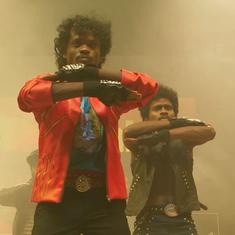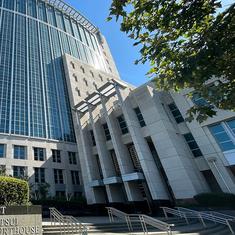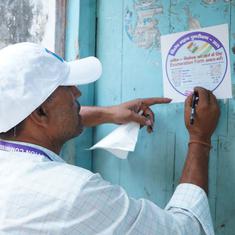As international prices of low-grade iron ore – the grade available in Goa – slumps in the direction of $40 a metric tonne, uncertainty has gripped the mining sector in this coastal state.
After shutting down in June due to the monsoon, the mining season in Goa normally opens in September-October. But so far, there has been no movement of ore, and no sign that long-term contracts have been signed with China and Japan, the traditional export markets for Goan iron ore. Even spot contracts have largely not been signed, with some in the industry signalling a “wait and watch” approach this season.
Goa produces low grade iron ore with between 54% and 57% iron content. Iron ore with above 60% iron content is considered high grade ore. The use of high-grade ore in the manufacture of steel takes less energy and results in lower pollution during the manufacturing process too.
China, which buys two-thirds of global seaborne iron ore shipments, according to Reuters, has shifted steel production to only efficient blast furnaces, which run on high-grade ore. At present, Japanese steel mills also prefer high grades.
International competition
With the market for low grade iron ore suddenly collapsing, and with Goa’s two major markets preferring higher grades of ore, exporters in Goa say they find themselves having to beat already huge discounts being offered by international vendors like Australian firm Fortescue Metals Group, which deals in similar grades of ore as that produced in Goa.
“Suppliers in Australia have been giving a discount of 40%, and we have got to compete with that,” said Shivanand Salgaocar, chairman and managing director of mining firm VM Salgaocar & Brother Private Limited.
Harish Melvani, director of mining firm HL Nathurmal, concurred. “While Indian and Goan exports ground to a standstill from 2012 to 2016 [due to restrictions on mining and a debilitating 30% export cess imposed by the Union government] buyers developed alternative vendors in Indonesia, Phillipines and Malaysia,” he said. “So if we want to attract them back, Goan vendors will have to offer discounts. Last year Goan ore was sold at cut-throat prices, just to regain the market.”
The Centre dropped the 30% export cess in February 2016 for grades below 58% iron content, but prices were low, and exports only picked up pace after global prices increased to $94.5 a tonne from November that year. Exports from Goa made a recovery until May, achieving within a hectic five months the maximum cap of 20 million tonnes per annum imposed by the Supreme Court in 2014 when it lifted its 2012 ban on mining in the state.
The slide in the price of iron ore since June has made exports from Goa unviable yet again, and the state’s mining industry is reluctant to restart operations just yet unless transport and production costs are lowered, igniting fresh tussles with local trucking lobbies. Miners have also appealed to the Union and state governments to ease their tax burden. Goan miners know they have to make some exports to stay in the game.
High taxation, royalty payments, and various other state and central government duties and charges, including contributions to a permanent fund – in which 10% on the sale value of iron ore in Goa is collected – increases the cost of production of Goan ore, making the actual Free on Board [a term used to describe the transportation of consignments to the ship or any other carrier by the seller without charge to the buyer] realisation less than $20 a tonne said Glenn Kalavampara, secretary of the Goa Mineral Ore Exporters Association.
Said Francisco Lume Pereira, director of mining firm Sociedade de Fomento Industries: “At these rates of realisation it is not possible to do mining.”
Implications for state revenue
A sluggish mining sector is bad news for the Goa government, both from the view of managing employment, socio-political relations and state revenues. Transport contractors and truck owners form the Bharatiya Janata Party-led ruling coalition’s political base in the interior mining taluks – from village sarpanches to MLAs.
From the seventies onwards, as mining destroyed agriculture in its wake, the industry gave a section of Goa villagers a stake in the business by financing truck ownership and transportation contracts for them. In the boom years of mining, from 2007 to 2012, trucking and river barge investments and inventory rose sharply. Though these numbers dropped after the Supreme Court banned mining in Goa in 2012, some 6,000 trucks are still chasing the dwindling ore business. There is an estimated 50% surplus of trucks. The government is now attempting to create alternative agricultural employment options. But from all indications, mining villages are no longer willing to play along with the industry if they find themselves left out from the profits of mining.
Last season, intense hyper-local jostling for the shrinking transportation business escalated tensions between various trucking groups, and between truckers and industry, leading to complaints of pollution, which led to the stoppage of mining in the Sonshi area of northeastern Goa’s Sattari taluka.

On Wednesday, the state government concluded negotiations with representatives of trucking associations to fix a rate for the transportation of iron ore for this season. The truckers want a hike in rates, but initially settled for a minimum increase following reports in the mining press about the downturn in the global markets. Other groups have rejected the rates and threatened to agitate. Both miners and truckers are locked in a face-off over transportation contracts and pricing.
Goa’s narrow village roads make the movement of ore susceptible to discord of any sort. Last year, truckers prevented the movement of ore several times over payment disputes.
“The transport issue is highly politicised,” said a miner on condition of anonymity. “Basically, we are being forced to accede to their requests. But if it is not viable anymore, we will stop transporting and nobody will get anything.”
Legal challenges
In addition to these uncertainties, the industry is also fielding several legal challenges from the environmental non-profit, Goa Foundation, which closely monitors the industry and has proposed an alternative mining logic for the state.
Claude Alvares of the Goa Foundation said: “We have filed a Public Interest Litigation for the villagers of Sonshi to declare the eight months of mining in Sonshi as illegal and for recovery of Rs 780 crore [earned in that time from Sonshi] to be put into the Permanent Fund, for carrying out mining in violation of the Air Act.”
The petition was admitted in the High Court of Bombay at Goa on October 4.
The Foundation also plans to use the air and water pollution data recorded at Sonshi to oppose the Goa government’s request to the Supreme Court, made in April, to increase the 20 million tonnes per annum iron ore extraction cap imposed by the court. This matter comes up later this month before the apex court.
Meanwhile state director of mining, Prasanna Acharya said that he was optimistic that ore movement would resume after the prolonged monsoon that has not yet abated. “All matters will be sorted out”, he said.

